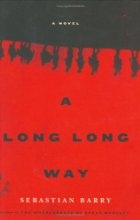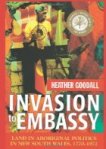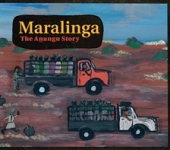Saturday 7.30 pm: Sebastian Barry: Old God’s Time
If I’ve realised that Sebastian Barry was appearing by video link I might not have booked for this session, but that would have been a mistake. A tiny Kate Evans sat on the stage in front of a huge Sebastian Barry speaking to us from early morning in Ireland in the room where, he said, he had written the book they were discussing, Old God’s Time (link is to my blog post).
Whether it was because Barry was speaking to us from the safety of his own house, or because of a paradoxical effect of long-distance communicating, or whether it might have happened anyhow, this session had a wonderful intimacy about it. Almost everything he said enriched my understanding and enjoyment of the book.
When Kate Evans asked about the physical setting of the book, Barry answered straightforwardly and then went on to talk about the novel’s seed being planted in a brief period of his childhood when he lived in that building. I don’t know anything of his life story, but he may have been hinting that the book child’s situation – he and his mother are in hiding from his abusive father – in some way echoes his own experience.
My highlight of this session, and of the whole festival, came when Kate Evans, referring to a tirade against the Catholic Church delivered by the character Tom Kettle, asked if Tom’s rage was also Sebastian’s. (Someone read this passage out at my book group meeting – it’s a stunningly passionate piece of writing, and Evans’s question is inevitable.) Barry asked Evans if she would read the passage, and when she apparently didn’t hear his request but read out a couple of isolated phrases, he paused, as if deciding how honestly to respond and then gave a complex answer:
A) The first rule of novel writing, he said, is not to write in anger. He spoke a little about the mysterious nature of novels. The writer sits in a room and puts words on paper. After a number of processes involving many other people, someone sits in their usual reading place and reads the words. The characters who have been imagined by the novelist are imagined all over again by the reader.
B) Though Tom is an imaginary character, his anger is like that of real-life survivors. It gives voice to things that need saying, and when you make the effort of listening to it, you are receiving a gift. Barry felt that he was receiving such a gift from Tom.
C) He didn’t stop there. There was a moment in 1960, he said, when Archbishop McQuaid (a historical personage mentioned in the novel) was given evidence of child sexual abuse committed by a priest in his archdiocese. He consulted an Auxiliary Bishop, Patrick Dunne, asking him if he considered that the crime was a crimen pessimum (a crime of the worst kind). Dunne said he thought it was. McQuaid responded that he would keep it quiet anyway, because it would cause a scandal that would do great harm to the church. That moment of decision ruined the lives of thousands of children, and this was the object of Tom’s rage.
But for Barry, there is another twist: Patrick Dunne was his cousin, closely related to a man who appears honourably in one of Barry’s novels. On realising that this man was present when the decision was made, Barry felt that his own DNA had been in the room. Irrational as it may be, he felt complicit. I understood him to be speaking a difficult personal truth but also – though he didn’t spell this out – making a point about fiction-writing: clickbait outrage is easy but it doesn’t make for great fiction. Tom the character can be outraged, but the person who creates him needs to be wary of claiming the moral high ground.
Astonishingly, but necessarily, Kate Evans then moved on to the next question, and Sebastian Barry moved on with her, leaving me – and surely I wasn’t the only one – in awe at what had just been given me.
The session ended with a reading, in which Barry was transformed into Tom Kettle and his glorious language filled the room. In the passage, Tom is listening to a new friend playing Kol Nidrei, Op. 47 by Max Bruch on the cello (link is to a performance by the Frankfurt Radio Symphony Orchestra). We were then treated to a performance of the piece arranged for cello and piano, performed by Melissa Barnard and Lee Dionne from the Australian Chamber Orchestra.
















 Ross Gibson, Seven Versions of an Australian Badland (2002): I choose this over Gibson’s brilliant 26 Views of the Starburst World, which was published this year, because the earlier book made me understand something of the colonisation of my North Queensland home that I had read about previously but managed not to grasp.
Ross Gibson, Seven Versions of an Australian Badland (2002): I choose this over Gibson’s brilliant 26 Views of the Starburst World, which was published this year, because the earlier book made me understand something of the colonisation of my North Queensland home that I had read about previously but managed not to grasp.
